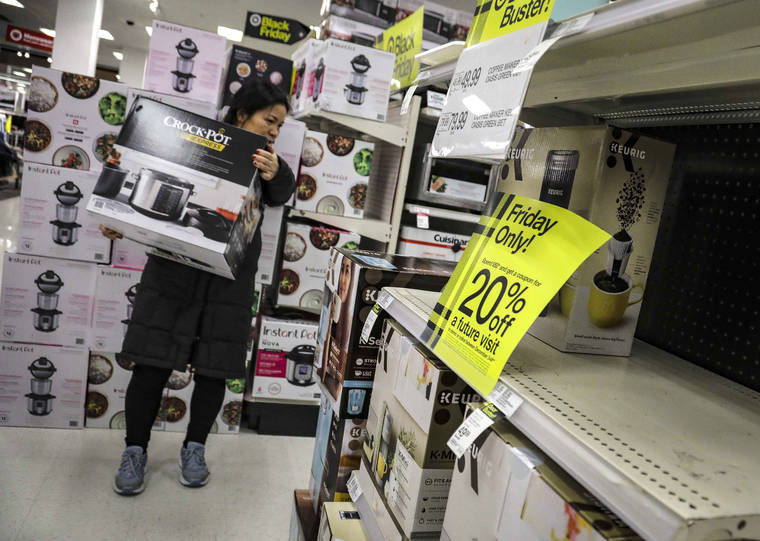NEW YORK — The National Retail Federation, the nation’s largest retail trade group, expects that holiday sales could actually exceed growth seen in prior seasons, despite all the uncertainty surrounding the pandemic.
The reason? Shoppers are looking for opportunities to spend and celebrate the holidays during tough times.
The trade group said Monday that it predicts that sales for the November and December period will increase between 3.6% and 5.2% over 2019 to a total ranging between $755.3 billion and $766.7 billion.
The numbers, which exclude automobile dealers, gasoline stations and restaurants, compare with a gain of 4% to $729.1 billion last year. Holiday sales have averaged gains of 3.5% over the past five years.
“After all they’ve been through, we think there’s going to be a psychological factor that they owe it to themselves and their families to have a better-than-normal holiday,” said NRF Chief Economist Jack Kleinhenz in a statement. “There are risks to the economy if the virus continues to spread, but as long as consumers remain confident and upbeat, they will spend for the holiday season.”
Kleinhenz cited that households have strong balance sheets buoyed by a strong stock market, rising home values and record savings boosted by government stimulus payments issued earlier this year. Jobs and wages are increasing, energy costs are low and reduced spending on personal services, travel and entertainment because of the virus has freed up money for retail spending, he added.
NRF expects that online and other non-store sales, which are included in the total, will increase between 20% and 30% to between $202.5 billion and $218.4 billion, up from $168.7 billion last year. Not included in total sales figure are sales from restaurants, gas stations and auto dealers.
The National Retail Federation delayed the release of its forecast by about a month, citing the uncertainty around the pandemic.
Still, the group warns any further shutdowns of stores as virus cases surge could derail sales. And it emphasized that any renewal of a government stimulus package would help the holidays.
When the pandemic was declared in mid-March, essential retailers like Target and Walmart were able to stay open while non-essential stores like department stores were forced to close. That further increased the dominance of big box stores, while malls based clothing stores faced further peril. The temporary closures accelerated bankruptcy filings of a slew of chains like J.C. Penney and Neiman Marcus that were already struggling.
Many mall-based stores and other small and mid-sized businesses are still struggling to recover heading into the heart of the holiday season.
When non-essential retailers are forced to shut down, their e-commerce business can’t expand enough to keep them whole, according to Nick Mangiapane, chief marketing officer at Verisk Financial’s Commerce Signals unit, which captures credit and debit spending from 40 million U.S. households.
In the first wave of COVID-induced shutdowns, the gap in year-over-year sales trends was 57 percentage points between essential and non-essential with essential store sales posting a 6.4% gain while the rest suffered a 51.3% drop. During the second spike, which took place during the summer, the gap was smaller with few shutdowns, but it was still substantial.
So far, in this third wave, the sales performance gap is still sizable but any shutdowns will hurt sales for non-essential businesses dramatically, according to Mangiapane.
Still, the NRF cited that the aggregate retail sales have seen a V-shaped recovery, growing both month-over-month and year-over-year each month since June. As calculated by NRF, sales rose 10.6% in October compared with October 2019, likely fueled in part by early holiday shopping. For the first ten months of this year, retail sales rose 6.4% compared with the first 10 months of 2019.
————————
Follow Anne D’Innocenzio: http://twitter.com/ADInnocenzio


